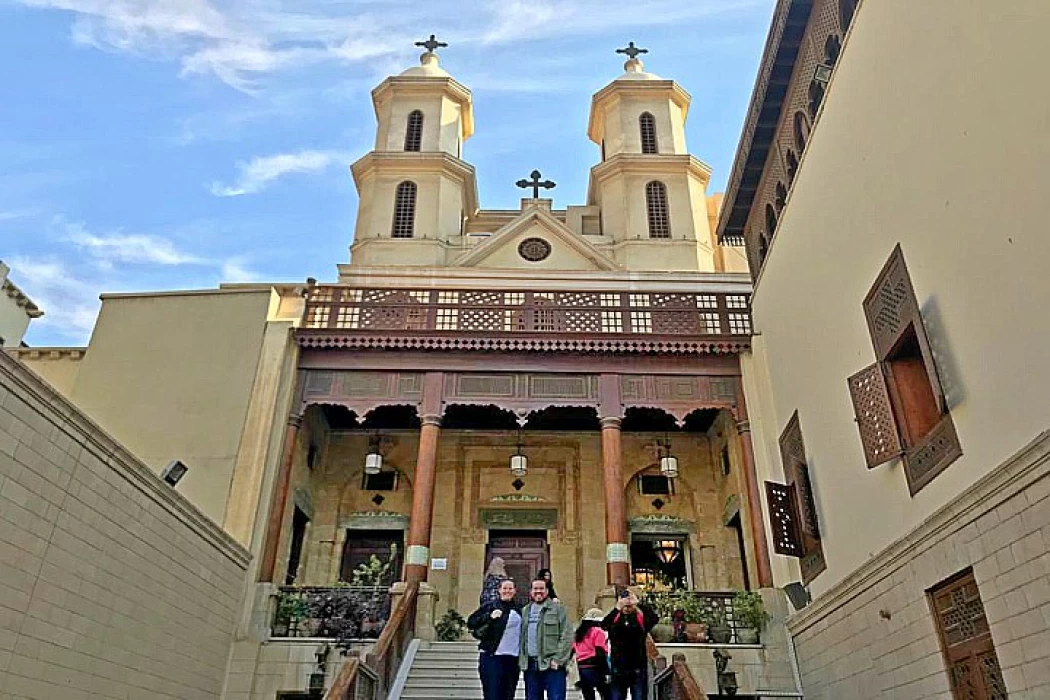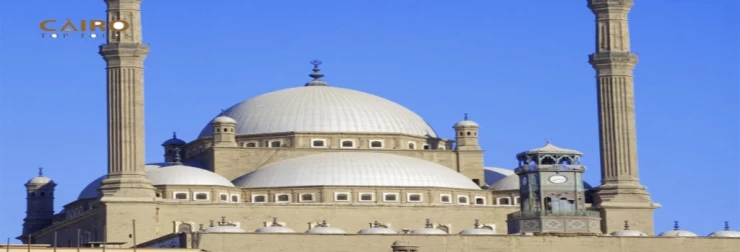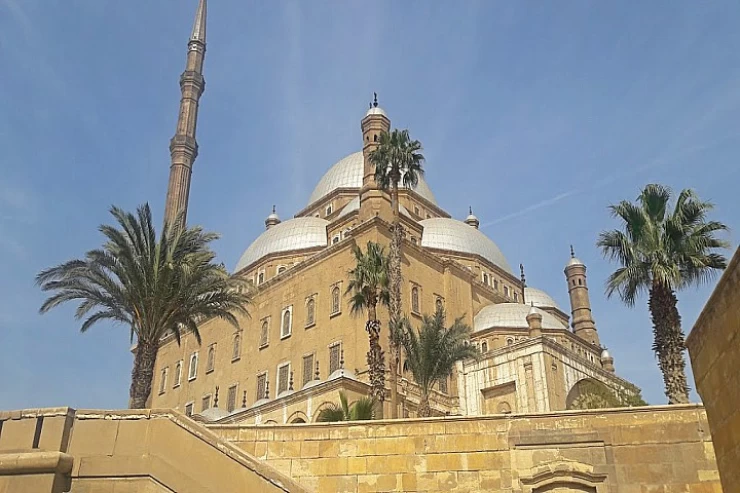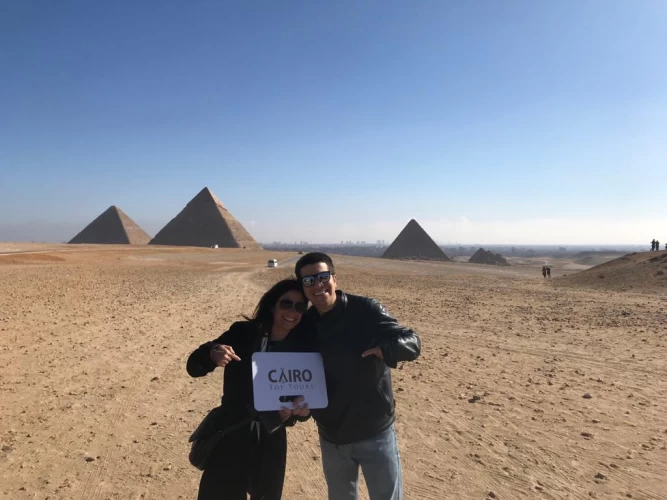
Il Cairo copto | Il vecchio Cairo

Cairo copto
Fino all'inizio dell'era islamico in Egitto,Il Cairo copto era una vera roccaforte del cristianesimo in Egitto, nonostante questo, la maggior parte degli edifici e delle chiese attualmente visibili furono costruiti dopo la conquista dell'Egitto da parte dei musulmani.
Il Cairo copto comprende la fortezza romana di Babilonia, il museo copto, la Chiesa Sospesa, la chiesa greca di San Giorgio e siti storici, e molte altre chiese copte che lo rendono uno dei siti storici più ricchi e Cosa da fare al Cairo. Si crede nella tradizione cristiana che la Sacra Famiglia abbia visitato questa zona e abbia soggiornato nel sito della chiesa dei Santi Sergio e Bacco (Abu Serga), ecco perché le persone pensano che i loro tour giornalieri al Cairo siano sicuri che questa sezione del vecchio Cairo sia vista. Il Cairo copto è stato un centro della cristianità in Egitto fino all'era islamica, sebbene la maggior parte degli edifici contemporanei delle chiese nel Cairo copto siano stati costruiti dopo la conquista islamica dell'Egitto nel VII secolo.
Quando i persiani costruirono un forte su Il fiume Nilo situato a nord di Menfi. questa è una prova di risarcimento nella zona già nel VI secolo aC. I persiani costruirono anche un canale dal Mar Rosso al Nilo (a Fustat). Il borgo persiano si chiamava Babilonia, evocativo dell'antica città lungo l'Eufrate, e acquistò importanza mentre la vicina città di Menfi si indeboliva, così come Eliopoli. Babilonia e il suo popolo furono per lo più dimenticati durante il periodo tolemaico.
Si ritiene tradizionalmente che la Sacra Famiglia abbia visitato l'area durante la Fuga in Egitto, chiedendo rifugio a Erode. Inoltre, si ritiene che il cristianesimo abbia iniziato a diffondersi in Egitto quando San Marco arrivò nella terra di Alessandria, diventando il primo Patriarca, sebbene la religione rimase nascosta durante il dominio dei romani. Quando la popolazione locale iniziò ad organizzarsi per una rivoluzione, i romani, riconoscendo l'importanza della regione strategica, presero il controllo della fortezza e la trasferirono nelle vicinanze come fortezza di Babilonia. Traiano ristabilì il canale verso il Mar Rosso, provocando un commercio elevato, sebbene l'Egitto rimase un ristagno per quanto riguardava i romani.
Goditi un tour completo del Cairo copto quando pianifichi un Tour in Egitto o tra le nostre varietà di tour dal Cairo.
Sotto i romani, San Marco ei suoi potenti seguaci riuscirono a trasformare un'abbondante divisione della popolazione, dalle fedi atee al cristianesimo. Man mano che le comunità cristiane in Egitto crescevano sempre di più, furono costrette all'esilio dai romani, sotto l'imperatore Diocleziano intorno al 300 d.C., e gli abusi continuarono in seguito all'editto di Milano che proclamava la tolleranza religiosa. La chiesa copta successivamente isolata dalla chiesa dei romani e dei bizantini. In seguito al governo di Arcadio (395-408), furono fondate numerose chiese nell'Antica Cairo. Nei primi anni del dominio arabo, ai copti fu permesso di costruire diverse chiese all'interno della zona della vecchia fortezza del vecchio Cairo.
Nel Cairo copto, negli anni 1115 fu fondata La Sinagoga Ben Ezra, in quella che in precedenza era una chiesa copta costruita nell'VIII secolo. I copti dovevano venderla, per raccogliere fondi per pagare le tasse a Ibn Tulun.
Il Cairo copto ha ospitato la sede del papa copto ortodosso di Alessandria nell'XI secolo d.C., che si trova storicamente ad Alessandria. Mentre le autorità legali si trasferirono da Alessandria al Cairo dopo l'invasione araba dell'Egitto durante il mandato di papa Christodolos, il Cairo mostrò la residenza fissa e reale del papa copto al Cairo copto nel 1047 presso la chiesa sospesa.
Nel 1910 Il Museo Copto Nel Vechio Cairo è stao fondato e ospita i più importanti esempi di arte copta al mondo.
Chiese:
Chiesa di Santa Maria (Haret Elroum),Chiesa di San Mercurio,
Chiesa dei Santi Sergio e Bacco (Abu Serga),La Chiesa Sospesa chiesa della Santa Vergine (Babylon El-Darag),la Chiesa di Santa Barbara,la Chiesa di San Menas,Monastero e La Chiesa di San Giorgio (Il Cairo),Monastero e Chiesa di San Giorgio (greco-ortodossa).
Le meraviglie del turismo in terra egiziana sono i frutti che Cairo Top Tours vi porta attraverso i suoi agenti in loco online.
Wenn Sie neugierig auf die Stadt Gizeh sind und sehen möchten, wie sie aussieht und was dort in der Vergangenheit geschah, finden Sie viele Informationen und Bilder auf der Seite "Is Traveling To The White Desert Safe?". Hier erfahren Sie mehr über Gizeh.
Coptic Cairo is located in the center of the vast metropolis of Egypt. As the names go, Coptic Cairo is the district replete with history and antiquities—more so, stories of this country’s prominence in Christianity. The district popularly referred to as Old Cairo is one of the oldest parts of the city and is one of the best illustrations of the great melting pot that is the country’s history. People come here to appreciate the mixtures of obvious architectures of all religions—Christianity, Judaism, and Islam. This is to explain more what Coptic Cairo has to offer any tourist who wishes to visit Egypt and not just to see the Pyramids.
A Walk Through History: The Origins of Coptic Cairo
Coptic Cairo is the memory of the period when the settlement was referred to as Babylon the Great, the Roman Empire's fortress on the Nile River. As early as the 4th century, this region became a great hub for Christianity and scholarship. The transformation of this area into a religious center is attributed to the advancement of Christianity in Egypt which can be dated back to the coming of St. Mark in Alexandria in about 42 AD. Christianity expanded, leading to the construction of many churches within Egypt, with Coptic Cairo being the first.
Copt is a name that is given to the Christians from Egypt who belong to the Coptic Orthodox Church, whose doctrine is considered to have been founded by the apostle Mark. Coptic Cairo is a time waiting to be unearthed since it harbors many ancient churches, convents, and other buildings vital for the study of the growth of Christianity in Egypt and the area around it.
1. The Hanging Church (Saint Virgin Mary's Coptic Orthodox Church)
The Hanging Church, which gets its name from the position it sits in, on the upside of the Roman gatehouse of Babylon, is one of the most remarkable and magnificent landmarks in Coptic Cairo. Constructed in the third century, the church is one of the ancient churches in Egypt and is very dear to the Coptic community. The interior design of the church is unique, as it has a wooden ceiling that is crafted like Noah’s Ark, the walls are beautifully detailed, and there is an iconostasis. Visitors are treated to 110 icons depicting biblical scenes and Coptic saints, the oldest of which dates to the 8th century.
2. The Church of Sts. Sergius and Bacchus
Another olden-era church targets modern young and old Christians and lots of tourists, as it is said to have been erected in the cave where the Holy Family hid by the time they were headed to Egypt. The Church of St. Sergius and Bacchus has a mystical aura and simple beauty, which makes one feel immersed in the time of early Christians in a very strong way. The crypt where the Holy Family is said to have taken shelter is accessible to visitors, which provides a striking contrast between the ancient stories of Egypt and the Bible.
3. The Ben Ezra Synagogue
The Ben Ezra Synagogue is one of the most ancient Jewish worship centers in Egypt and is living proof that diverse religious communities may peacefully co-exist in the country. Local tradition maintains that the very synagogue is built on the ground where the Pharaoh`s daughter discovered Moses in the bulrushes. Once a Coptic church, it was turned into one in the 9th century and is an exquisite example of architectural design, comprising carved wooden panels, lovely murals on ceilings, and other historic pieces.
4. The Coptic Museum
Coptic Museum is a must-visit place if one feels like exploring more on the history of Coptic Christianity. Established in 1910, it boasts the largest collection of artifacts and artwork belonging to Copts in the world, including decorated books, clothes, and Coptic icons. This museum also opens up the world to many imaginations about the lives of early Egyptians—Christians in particular—their arts, as well as Coptic art that evolved in different climates interacting with other cultures.
5. The Monastery and Church of St. George
St. George's Church is an exceptional place, as it is one of the rare surviving round-shaped churches in the Middle East. The Greek Orthodox Church here was believed to have been erected in the 10th century; however, some sources even suggest that the primary edifice was erected in the sixth century. The monastery and church are dedicated to Saint George, who is one of the most revered and cherished saints in Christianity, and they still serve the local Christians as places of worship. Also, every April, there is a feast devoted to Saint George, which welcomes many pilgrims all around the year.
On its own, Coptic Cairo is more than a place of worship; it is a representation of the multilayered legacy of Egypt. The area is a perfect example where different practices, traditions, and beliefs, including Christianity, Judaism, and Islam, have interacted within a small radius for centuries. A church, a mosque, and a synagogue are often located within close range of each other, which hints at the existence of wonderful stories about these places and the people in them.
Coptic Cairo illustrates well the enduring spirit and flexible nature of the Copts, who have been able to practice their faith and customs even in the face of changes that have rocked Egypt over the years. This is not just a tourist attraction; it is a zone with schools, markets, and even houses, which maintains a character that is dynamic and expanding.
Dress Appropriately: As a lot of the places of interest are of religious significance, it is important that one dress appropriately. This implies that one should wear clothes that cover their shoulders and knees.
Management of Time: Coptic Cairo is an extensive area with lots of things to see, and many of the places close by early evening. Browse around every place for a couple of hours and enjoy the ambiance without the pressure of time in the views.
Photography: One or two of their chapels and the Coptic Museum may not allow the taking of pictures; hence, it is advisable to seek the courtesy of asking before taking any pictures.
Hire a Professional Guide: Every destination has its own story and history, and every traveler ought to understand that, so it’s better to hire professionals. Their service will be needed as they will explain things like the signs, customs, and stories that cannot be seen or heard by ordinary visitors.


















